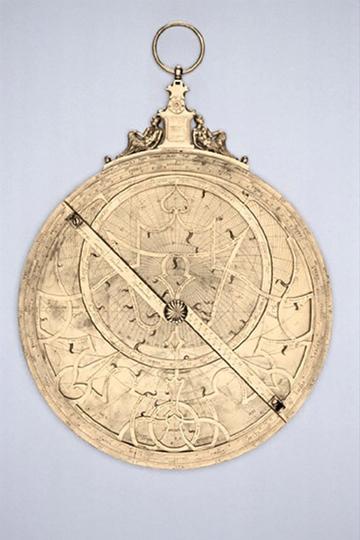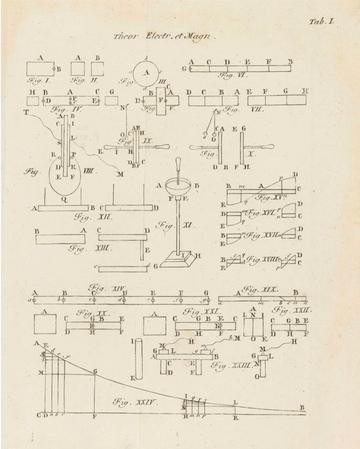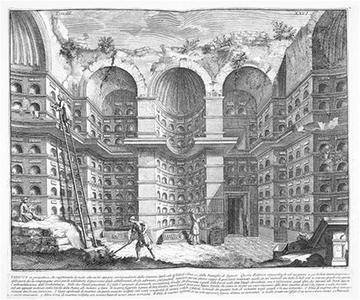Jim Bennett and John Heilbron as Historians of Science and Intellectual Historians
The week between 28 October and 5 November 2023 witnessed the deaths of two giants of the history of science associated with Oxford. Jim Bennett (1947–2023) served as Director of the History of Science Museum from 1994 to 2012, remaining a vibrant part of the Oxford community after his retirement. John Heilbron (1934–2023) worked largely at Berkeley, but since the late 1990s spent much of his time in Oxford, becoming a Senior Research Fellow at Worcester College. I was fortunate to know both, and to benefit from their erudition and advice.
Eloquent obituaries and accounts of their contributions to the history of science have already appeared. Here, I should like to offer something slightly different. One of the great strengths of Jim and John’s work was their recognition that the history of science could not be understood outside the framework of a broader, total history: intellectual, cultural, material, and social. The ghettoisation of different branches of intellectual history has perhaps obscured this aspect of their research for those not intimately familiar with it. Because the Oxford Centre for Intellectual History has wisely adopted a more capacious approach to the field, and because of its happy relationship with the Oxford Centre for the History of Science, it seems appropriate to celebrate and comment on this aspect of the scholarship of two historians who did so much to advance our understanding of early modern knowledge.
Jim Bennett was known especially for his work on the history of scientific instruments and the practical dimension of pre-modern science. He stressed the importance of instruments which preceded the more famous optical and natural-philosophical devices (telescope, microscope, barometer, air-pump), and which historians had largely left to museum curators. But this interest never manifested itself in a refusal to immerse himself in the intricacies of texts or in simplistic, anti-intellectualist valorisation of ‘artisanal’ practitioners. Rather, it was part of a sophisticated vision of intellectual change during the period sometimes called the Scientific Revolution (the nomenclature is not so important; Jim never wasted much time on nominalist squabbles). That vision was best summarised in an article Jim published in 1998:
One of the central curiosities of the Scientific Revolution is its conjunction of mathematics and experimental practice; the ethos of practical geometry, with its characteristic instrumental application of generalized geometric techniques, offers a parallel conjunction worth investigating. Neither the earnest, improving, inductive programs of the Baconian type, nor the Neoplatonist aspirations toward a transcendental geometric blueprint for the world, seem to have the ingredients we will need to supply this synthesis. Further, practical geometry promises to carry the whole enterprise beyond the limited arena of natural philosophy and into association with developments played out on a much larger stage, in Europe and beyond.
Jim recognised that an attention to instruments was valuable not only in itself, but because it would ensure fidelity to the preoccupations of early moderns, and thus help dispel later anachronistic mythologies. For example, he noted that almost all early modern mathematical compilations had a section on dialling. And yet, the importance of the many types of sundial – copiously preserved in the museum collections he knew so well – to the rise in prominence of mathematics had not previously been recognised.
Such insights contributed to a grander account of the shift from doing to knowing as a crucial component of the mathematisation of natural philosophy. One of Jim’s most intriguing suggestions was that the very distance of Renaissance mathematical instruments from natural philosophy worked as a liberating force. The terrestrial globes that were made from the late 15th century onwards present a rotating Earth before the publication of Copernicus’s De revolutionibus (1543). As Jim pointed out, the obvious incompatibility with Aristotelian natural philosophy was possible not because the globes’ makers were heliocentrists, but because they were tools that could be used to find the place of the sun in the zodiac, times of sunrise and sunset, and more. Similarly, by examining several 16th-century astrolabes – the astronomical instrument better known for its use in antiquity and the middle ages – Jim could show how academic mathematicians such as the Leuven professor Gemma Frisius, one of the very few 16th-century supporters of heliocentrism, operated within a recognised circle of practitioners concerned with cartography and projective geometry.

The back of an astrolabe made at the Arsenius workshop in Leuven, depicting a novel geometrical projection by Gemma Frisius, a professor at the city's university. Museum of the History of Science, Oxford, Inv. 53558.
In a set of famous articles from the 1970s and 1980s, Jim applied similar insights to the 17th century. He argued that one could draw a line from William Gilbert’s De magnete (1600) – whose idea that the Earth is a giant magnet Jim persuasively conceptualised not as a late exemplar of ‘Renaissance naturalism’ but a product of London practical mathematics – through Christopher Wren and Robert Hooke to Newton. The result was a brilliant and original reconsideration of the nature of 17th-century ‘mechanical philosophy’ that helped shift attention from the scientific dead-end that was Descartes’s metaphysical speculations towards the combination of mathematical theory and mechanical practice from which the most important innovations really stemmed.
At around the same time, John Heilbron was rewriting the history of early modern physics. John had studied with Thomas Kuhn, helping with the composition of The Structure of Scientific Revolutions (1962). But when Kuhn became bogged down with irresolvable philosophical disputes about the nature of science, John got on with the serious business of placing its history in context. As he put it, Kuhn had said that the right way to do history was ‘to climb into other people’s heads’, but in practice he ‘climbed about in only small and isolated spots in the heads he hunted’.
No one could accuse John of the same failure. His first major monograph, Electricity in the 17th and 18th Centuries (1979) is a barely believable triumph of textual and archival research (the bibliography stretches to 1600 items in nearly every major European language) conducted before digital catalogues, let alone Google Books: I give it to my students as a model of what a single book can achieve. It traced the rise of experimental physics among a host of university professors, Jesuit pedagogues, academicians, and public lecturers. (An anecdote recounts how another of Kuhn’s students was horrified to be presented by their master with a sample of John’s work and asked for their opinion about ‘A penis’; only upon reading it did they realise, with some relief, that Kuhn was referring to Franz Aepinus, a pioneering student of electricity and magnetism).

Engraved plate from Franz Aepinus's Tentamen theoriae electricitatis et magnetism (St Petersburg, 1759), one of thousands of texts discussed in John Heilbron's Electricity in the 17th and 18th Centuries (1979).
Like Jim, John stressed the centrality of mixed mathematics, and dismissed the importance of ‘Hermeticism’, to early modern science (a major task, since it was so fashionable to find Hermetic origins for everything in 1970s). He explained how these mathematical physicists quantified physics in the 18th century, both in their theoretical models and their reliance on measurement by instruments, applied to various ‘imponderable fluids’ – light, electricity, magnetism, heat, and nervous fluid – whose existence was postulated as a result of this very process of quantitative analysis. As John showed via meticulous examination not only of famous treatises but also a legion of textbooks, this quantified instrumentalism was blissfully indifferent to the kind of metaphysical and ontological issues that had previously troubled natural philosophers, instead proceeding via analogies between the imponderables. This finding allowed John to establish connections between scientists as seemingly different as Luigi Galvani (known for making frogs’ legs twitch and thus discovering animal electricity) and Pierre-Simon Laplace (known for his celestial mechanics).
Both in his first book and elsewhere John demonstrated that studying those who had been dismissed as ‘minor figures’ was essential for understanding the process of intellectual change, those figures often having produced the innovations incorrectly attributed to a Boyle or a Franklin. This approach – which I call Rich Contextualism – has hugely influenced my own work. We continue to fight the battle that John began, with all too many intellectual historians still obsessing over the Great Men with whom they consciously or unconsciously identify, leading to the repetition of old myths that research such as John’s should have long killed off.
However, John never approached these figures simply as individuals, but always as members of communities. His realisation that the Jesuit order stood at the vanguard of experimental physics led to a lifelong fascination with Catholic sponsorship of science, and an insistence, now widely accepted, on the relative insignificance of the condemnation of Galileo, of whom John wrote the best intellectual biography to date. John’s The Sun in the Church (1999) is a beautifully readable account of early modern Catholic astronomy, centred on the large meridians (lines running north-west) installed in cathedrals and used as tools of ultra-precise astronomical measurement.

The meridian in the Basilica of Santa Maria degli Angeli, installed by Francesco Bianchini, from Bianchini's De nummo (1703).
One such meridian was installed in the Basilica of Santa Maria degli Angeli in Rome by the Jesuit-educated Francesco Bianchini, the subject of John’s last book, The Incomparable Monsignor (2022). As always, John followed his subject where the evidence led, which meant going well beyond the history of science. Bianchini’s Istoria universale (1700) involved monumental labours in that most difficult and contentious of early modern humanistic disciplines, chronology. Unfazed, John dived in, placing Bianchini’s dating of the sailing of Jason’s ship (and much more) in the context of early modern scholarship. Bianchini also undertook pioneering archaeological work, using newly discovered urns filled with the ashes of slaves belonging to Livia (the wife of Emperor Augustus) to reconstruct the social life of early Imperial Rome. Writing in his late eighties, John had to learn about early modern archaeology and several other disciplines so he could explain Bianchini’s place within the contemporary system of knowledge. In this and many other things, his work serves as a model to a new generation of intellectual historians and historians of knowledge.

The columbarium of the slaves and free servants of the Empress Livia, discovered in Rome and and depicted in the Camera ed inscrizioni sepulcrali (1726).
For all their very different interests, Jim and John displayed many of the same intellectual virtues. Both pioneered the investigation of early modern science as it was done, rather than as it was talked about (both recognised Bacon’s triviality and non-importance) or as later periods wanted it to be. Both resisted the high-profile trends – sociological reductionism, an obsession with ‘self-fashioning’, the desire to make everything political – that erupted during their careers and threatened to monopolise (or destroy) the history of science. And both had little time for the grand theorising that others thought the key to all mythologies in the wake of Kuhn’s work. ‘Investment in the collaboration between historians and philosophers has not been profitable’, was John’s brutal, brave, and accurate diagnosis when he gave the inaugural address at the opening of the Max Planck Institute for the History of Science in 1995.
These shared virtues may have stemmed from the fact that both Jim and John had been educated in the sciences. Today, some historians of science can be snooty (or worse) about those with such a background, insisting that they will inevitably succumb to the heresy of ‘internalism’. But the fact that some of Jim and John’s publications have stood the test of time – in some cases 50 years and counting – while later approaches posited as ‘radical’ have proved unfruitful surely shows that such expertise should be welcomed rather than shunned. I spoke of their all-embracing method as ‘Rich Contextualism’. The same approach is now being taken up by a new generation of scholars, not least in Oxford, where postdocs like Michelle Pfeffer and Nuno Castel-Branco are placing early modern science within a much broader intellectual history, making remarkable innovations in the process. Jim and John may have gone, but their legacy lives on.
Dmitri Levitin is an intellectual historian and historian of knowledge, based at Utrecht University and All Souls College, Oxford. His last book was the Kingdom of Darkness: Bayle, Newton, and the Emancipation of the European Mind from Philosophy (CUP, 2022). He is completing a trade book on the history of the sciences and humanities from ancient Mesopotamia to the 18th century, and is editing (with Scott Mandelborte) the newly discovered notebook of Isaac Newton’s Cambridge roommate, John Wickins.


